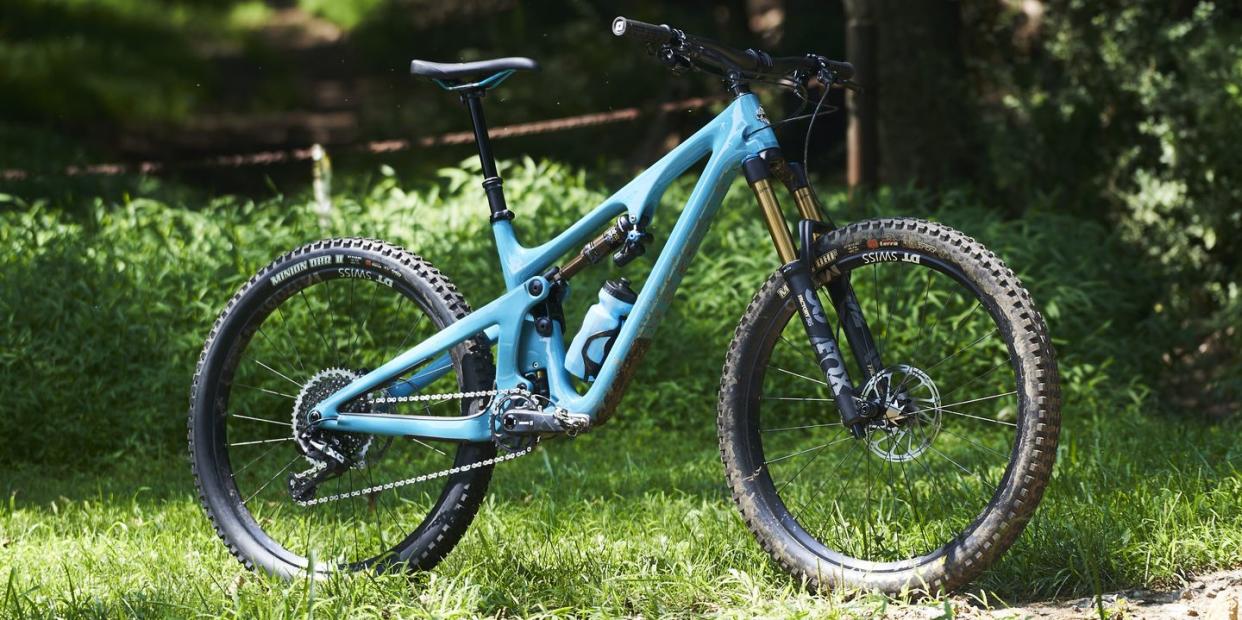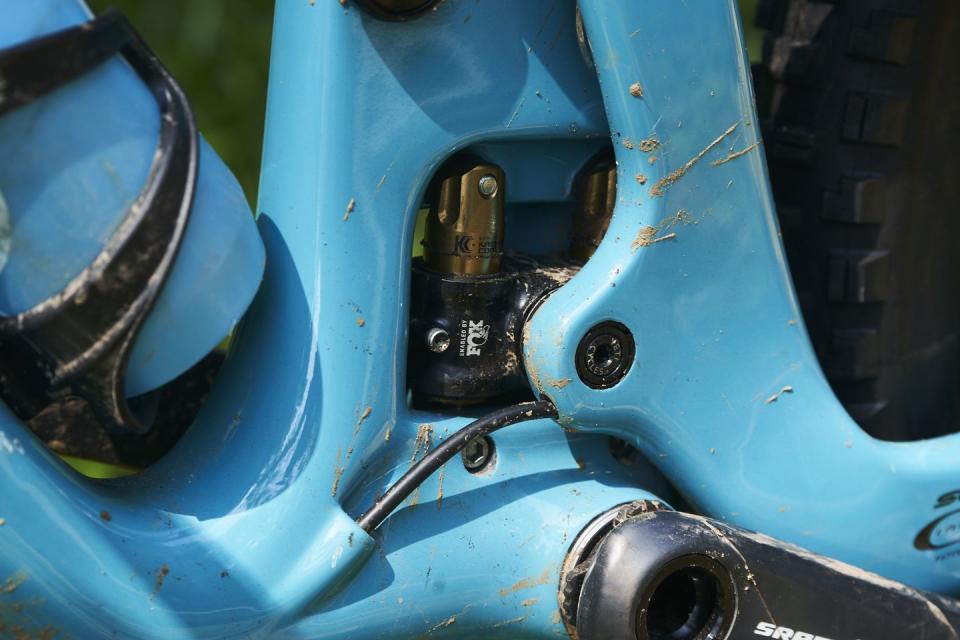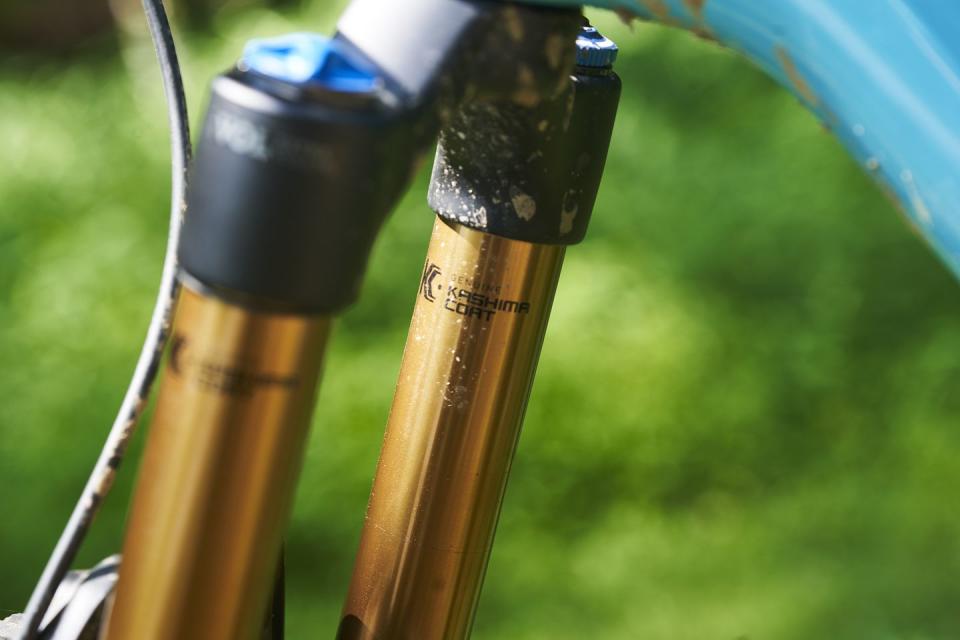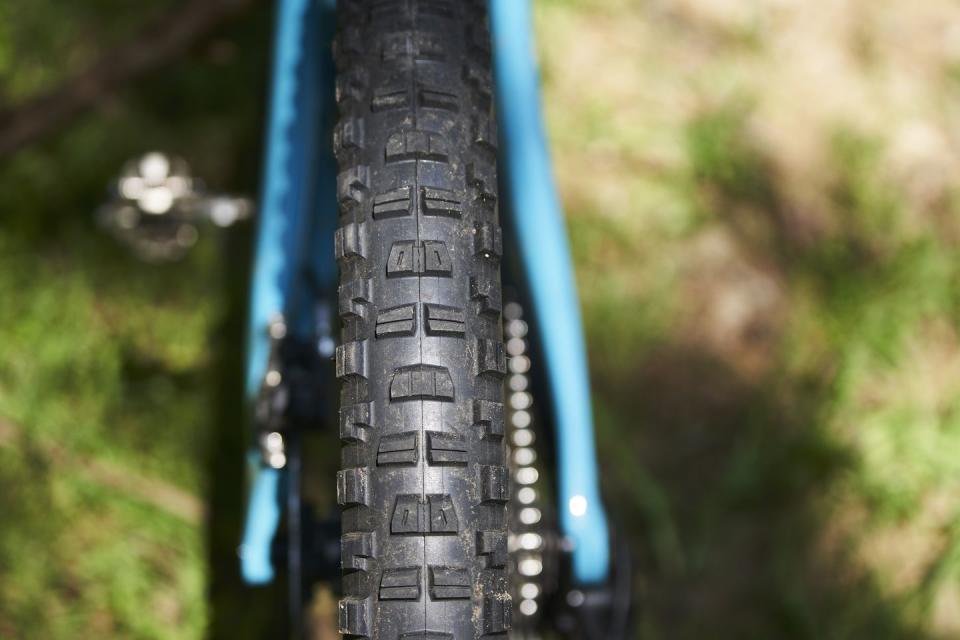Yeti’s SB140 Plays the Hardest

>The Takeaway The SB140 is a trail bike with 27.5-inch wheels that feels more playful and just as capable as anything else out there.
The Switch Infinity suspension system is excellent. You get crisp pedaling, lots of control, and tons of traction.
With a 65-degree head angle, and 460mm reach (size medium), this is one of the longest and slackest trail bikes you can buy. But it still handles incredibly well.
Price $7,299 (SB140 Turq T2)
More Images
If you’ve used any of the following phrases to describe riding your favorite trail, Yeti’s new SB140 may be for you: Drift, slide, pop, hammer, power, sketch, nose-bonk, gooooo!, oh no, oh shit, pfew, wheeee!
The new trail bike from the company that helped define the category five years ago with this bike’s predecessor, the SB5, has 160mm of front-wheel travel, 140mm in the rear, 27.5 wheels, and a suspension system that is tweaked for fun. Especially compared to the new breed of mid-travel 29ers, the 140 feels quick, snappy, playful.
The Switch Infinity suspension remains very similar to the system Yeti rolled out five years ago, but gets gets some important tweaks that make it more progressive, meaning it takes increasingly more force to compress the shock at the end of its stroke than at the beginning. That allows the 140 to “use all your travel, but still have a bike that’s poppable,” said Peter Zawistowski, Yeti’s director of engineering.
5 Details We Love
Like the SB165 that Yeti introduced last week, the 140 gets new geometry that lowers your center of gravity and moves it further behind the front axle. The bike is longer and lower than many—but not all— bikes in the category. It gets a 65-degree head tube angle, 433mm chainstays, and a 460.1mm reach (for a medium-size frame).
The 77-degree seat tube angle gets you forward when seated, so you have better control over the front end. Kristi Jackson, Yeti’s director of marketing, says the new version fills a real need in the line, that there’s riders who prefer the ride of 27.5-inch wheels over 29ers. After weeks of riding Yeti’s latest trail bike, I agree. The 140 delivers a ripping ride that, for some riders, could be the best trail bike option available.
A More Progressive Switch Infinity
The new 140 borrows very little from the SB5. The only two recognizable features that remain are the 27.5 wheels and the suspension system. Launched in 2014 on the original SB5, Switch Infinity is arguably the most unique suspension platform on any readily available mountain bike. It’s also one of the best.
Yeti bikes with the design have won numerous Editors’ Choice Awards for how well they blend smooth, efficient pedaling and excellent traction, without sacrificing too much ability to soak up big blows. The new version is 13 percent more progressive than the previous one. That follows a trend across all new Yetis—the recently launched SB165 is 27 percent more progressive than the SB6 it replaced for example. That number refers to the increase in leverage rate on the suspension from when the shock is uncompressed to fully compressed. Part of that is driven by improvements in shocks. “They’ve become more linear, and we wanted to progress with them,” Zawistowski said

What you feel is a bike that, better than most, has very active travel in its early stages, then ramps up to smoothly to absorb big hits. That’s important on a bike like this, that will be ridden fast, likely on trails with lots of technical climbing, then shot over jumps and off drops that can be more than head high. It’s a testament to the design, and how far shocks have come, that this bike feels like it pedals even more efficiently than the previous one.
It doesn’t necessarily feel crisper, or accelerate faster, though you experience both of those sensations. But rather it pedals better across a wider range of speed, terrain, and situations. Zawistowski says it’s because they tuned the bike so that the “anti-squat is very stable in a big band around sag,” which sounds a little wonky but you absolutely feel the benefits on the trail.
Other SB140 Details We Like (and One We Don’t)
The obvious thing here is that there is now room in the front triangle for a water bottle. It’s a small but noteworthy detail for riders who want to bust out for a shorter loop without the hassle of a hydration pack. But there are a few other details that are harder to see, and just as important.
Like the other bikes in Yeti’s line, this one gets integrated headset cups, a port in the bottom bracket to help routing your dropper seat post, internal cable routing, and a larger-diameter seat tube that provides a larger clamping area, so you’re less likely to pinch your dropper post, which can prevent them from working. Yeti also uses the same hardware on all its bikes, making it easier to maintain them if you’re one of the lucky people out there to own more than one Yeti (or race for a Yeti-sponsored team). For extra ground clearance, Yeti sends all 140s out with 170mm cranks.
SB140 Turq T2 Details
Style Trail
Material Carbon
Travel 140mm, rear; 160mm, front
Wheel size: 27.5
Fork Fox 36 Factory Grip 2
Rear shock Fox DPX2 Factory
Drivetrain SRAM X01 Eagle
Brakes SRAM G2 RSC
Tires Maxxis Minion DHF 2.6 front, Maxxis Rekon 2.6 rear
Seatpost Fox Transfer
Wheels DT Swiss M1700
The 140 also comes with 2.6-inch Maxxis tires on 30mm rims. It’s almost plus-size territory, but without the squirminess of those models. The DHF front is a proven winner, providing exceptional traction over rocks and deep, consistent cornering. The Rekon is a faster rolling, lighter rear tire that is exceptional on the relatively smoother terrain you find across a lot of trails in Colorado and California. But East Coasters may want something with more bite, especially in the wet. FWIW, Yeti had been selling most of its bikes with a Rekon rear, but is swapping to a DHR this year for many bikes, but the 140 isn’t one of them.
No More Beti
Until today, Yeti sold a women’s Beti version of the SB5 and the SB100. But with the launch of the 140, the company is ending the line. Those bikes, like Juliana options from Santa Cruz, had grips, seats, bars, and a shock tune for women. But Yeti found that riders usually swap out those parts anyway based on personal preference. And shocks have gotten so good that engineers say they can meet the needs of lighter riders with stock shock settings so they no longer needed custom tunes.
“The change was really driven by the women who work here—20 percent of our employees are women,” said Jackson, Yeti’s marketing director.
Other SB140 Options
The version I tested is the one of the most expensive options Yeti sells, the $7,299 Turq T2. But the company sells five options total that start at $5,399. Like many companies, Yeti sells two versions of its carbon frames. The lower-priced version, called the C-Series, weighs about 220 grams (half a pound) more than the Turq series frames, which use higher-grade carbon. Yeti offers two builds with the C-Series frames that cost $5,399 and $5,999. Three Turq-level models run between $6,899 and $8,299. Yeti sells the Turq frame for $3,499. The company doesn’t list a weight for that frame, but the C-Series, with shock and all hardware, comes in at 6.8 pound. Expect Turq to be about 6.3 pounds.

Riding the SB140
There’s been an onslaught of exceptionally good short and mid-travel 29ers unleashed on the trails lately. Bikes like the Evil Following, Transition Smuggler, Pivot Trail 429, and Giant Trance 29 are fast, energetic, and incredibly capable bikes with around 120mm of rear-wheel travel. Some wondered whether shorter-travel 27.5 bikes still had a place. Wagering that Yeti let the old SB5 fade away without an update would not have been a terrible bet.
Over the past year, I’ve ridden all those bikes and a few others like them. And as I started my search for a new trail bike for myself to replace my own ride, those bikes shot to the top of the list. I had, I thought, convinced myself two-nine was the way. But this bike has me recalibrating. It’s livelier than any of those bikes. Not by huge margins, but enough that you can feel the quickness in acceleration, the snappiness as you ratchet the cranks through tricky sections, the eagerness to lean into corners and pop off the top of a roller, turning wide grade reversals into doubles. It’s a riot to ride.
The 27.5 wheels don’t skim across the top of rocks and other small trail hazards the way 29ers do, so that’s something to consider based on where you ride. And we know, generally, that bikes with smaller wheels are slower than models with larger ones. But this bike isn’t for racing, or making things easier. It’s about mining the most joy you can out of every inch of dirt.
Because it’s a Yeti, with that fantastic Switch Infinity system, pedaling it is joyful too. Climbs still hurt, but you get very little wasted motion and lots of traction (the 2.6-inch tires help here too). On my last test ride on the 140, I made it up one nasty uphill section full of square rocks, roots, and a mean grade that had stymied me the previous half dozen times I attempted it. And that feels good.
With 460mm of reach, 430mm stays, and a 65-degree head angle, this bike flies downhill. With the seat down and your weight low and toward the rear wheel, drops are easier and you can get down steeps w/out your hip pack slapping into your wheel, which happens on some 29ers. The 170mm cranks help keep your pedals from slapping into rocks, but I still saw some sparks fly at times—this bike sits that low.

To help offset that rearward bias, Yeti gave the 140 a 77-degree seat tube angle. It’s the same as on the new 165, as well as several of the brand’s trail bikes. When seated, it brings your weight forward, making it easier to control the front wheel. It helps a ton on steep, seated climbs and even when pedaling on flatter terrain; this is one of the more agile “long and low” trail bikes I’ve tried. That’s something given the rest of the geometry.
The only time I winced was when I had to creep through really jagged rocks. In those situations, the seat position, combined with the smaller wheels, made it sometimes feel like my weight was too far forward, stalling my momentum when I bumped into a rock. That’s a pretty rare situation, but something to weigh if you ride a lot of slow-speed, rocky trails.
Everywhere else, the bike flew. The extra progressiveness makes it easier to use all your travel and less blunt when you hit the end of it—something that’s easy to do given the long reach and slack head angle. The choice between 27.5 and 29er wheels will come down to personal preference, riding style, and location, but with the 140, Yeti created a bike that deserves to be at the top of any trail-bike shopping list.
You Might Also Like